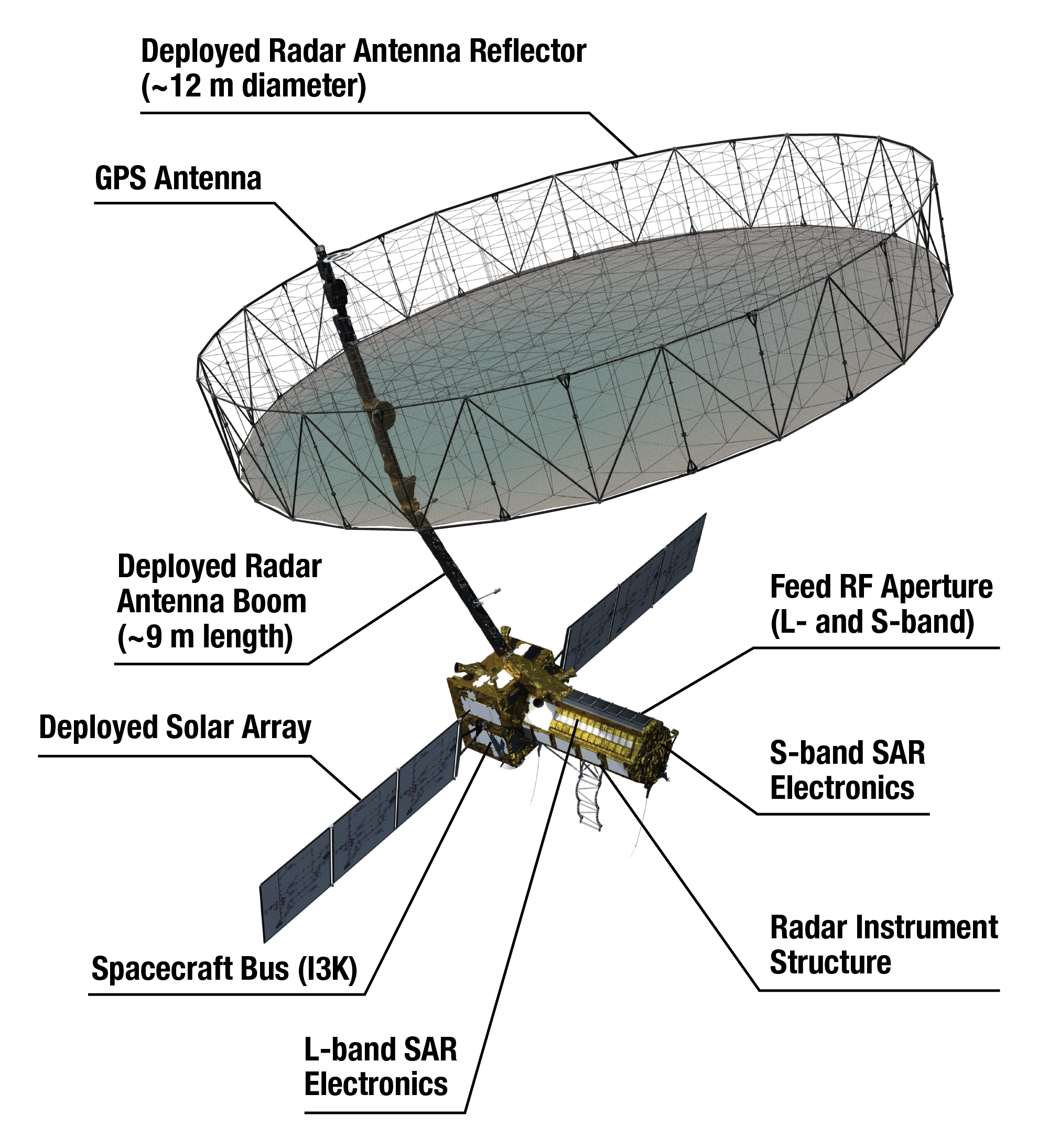Observatory

The NISAR spacecraft will accommodate two fully capable synthetic aperture radar instruments (24 cm wavelength L-SAR and 10 cm wavelength S-SAR), each designed as array-fed reflectors to work as SweepSAR scan-on-receive wide swath mapping systems. The spacecraft will launch on an ISRO GSLV-II launch vehicle into a polar sun-synchronous dawn dusk orbit.
NASA contributions include the L-band SAR instrument, including the 12-m diameter deployable mesh reflector and 9-m deployable boom and the entire octagonal instrument structure. In addition, NASA is providing a high capacity solid-state recorder (approximately 9 Tbits at end of life), GPS, 3.5 Gbps Ka-band telecom system, and an engineering payload to coordinate
command and data handling with the ISRO spacecraft control systems. ISRO is providing the spacecraft and launch vehicle, as well as the S-band SAR electronics to be mounted on the instrument structure.
The NISAR system comprises a dual frequency, fully polarimetric radar, with an imaging swath greater than 150 miles (240 km). This design permits complete global coverage every 12-days, allowing researchers to create time-series interferometric imagery and systematically map the changing surface of Earth. The satellite will be three-axis stabilized, that is, using reaction wheels that rotate to keep it correctly oriented to Earth and Sun. It will be launched into a polar Sun-synchronous dawn-dusk orbit (crossing the poles, trailing Earth's shadow to remain in a perpetual sunrise or sunset).
After a 90-day commissioning period, the mission will conduct a minimum of three full years of science operations with the L-band radar to satisfy NASA’s requirements, while ISRO requires five years of operations with the S-band radar. If the system does not use all its fuel reserves during the mission, operations may be extended further for either radar instrument.
